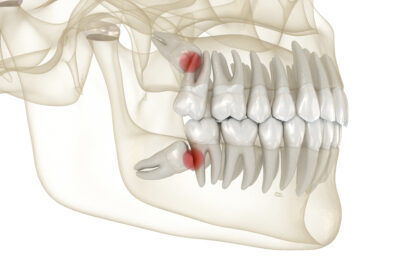Originally, third molars were referred to as ‘teeth of wisdom’ but ever since the 19th century, we’ve been calling them ‘wisdom’ teeth – why? Contrary to what it may seem, these teeth actually have nothing to do with the amount of wisdom you may or may not have. In fact, third molars coined this term because they generally erupt in our late teens and early twenties – previously known as ‘the age of wisdom.’ So we are certainly wiser by the time our third molars come in, they just don’t indicate (or bring) any wisdom – that comes with age.
Do You Have Wisdom Teeth?
Third molars are typically detected through x-ray images of your mouth as it grows. Your dentist can actually see how they’re coming in over time and if they’ll pose any risks to your other teeth or your oral health as a whole.
Should Your Wisdom Teeth Be Removed?
Nowadays, wisdom teeth are often removed because they typically pose a greater risk than benefit. While they can certainly be an asset to your mouth, they often come in misaligned or become impacted (stuck between the jawbone and gum tissue) and endanger your other teeth. If your third molars are causing you problems or are projected to cause issues in the future, your dentist will likely recommend that they be removed.
Extracting Wisdom Teeth
You may have anywhere from zero to 4 third molars – in some rare cases, people have even been know to have more than 4! However, extracting them is typically a simple procedure – just like extracting any other tooth (assuming your third molars have already erupted through the gum tissue). For impacted wisdom teeth, the procedure does become a bit more extensive as your dentist has to remove gum tissue to reach the tooth itself – but it won’t be causing you any pain or discomfort anymore afterwards!














